Heavy-Duty Trolleys - Buyer's Guide
Date Posted:6 September 2024
Choosing the right heavy-duty trolley can significantly enhance safety, efficiency, and productivity in your workspace.
Heavy-duty trolleys are indispensable for transporting bulky and heavy items in various industrial and commercial environments. Their robust construction and enhanced features make them suitable for demanding tasks, ensuring efficiency and safety. When choosing a heavy-duty trolley, it’s crucial to understand the key features and factors that will help you select the right one for your needs. This guide will provide you with essential insights to make an informed decision.
1. Why Choose a Heavy-Duty Trolley?
Heavy-duty trolleys offer several benefits that make them a valuable investment for high-load applications:
- Increased Load Capacity: Designed to handle substantial weights, heavy-duty trolleys are ideal for transporting large and heavy items that standard trolleys cannot manage.
- Durability: Constructed with robust materials, these trolleys are built to withstand the rigours of industrial use, offering long-term reliability and performance.
- Enhanced Safety: Heavy-duty trolleys often feature safety mechanisms such as reinforced frames and secure locking systems, reducing the risk of accidents and injuries.
- Efficiency: By facilitating the movement of heavy loads with minimal effort, these trolleys improve operational efficiency and reduce the strain on workers.
2. Types of Heavy-Duty Trolleys
Various types of heavy-duty trolleys cater to different applications and needs:
- Platform Trolleys: These feature a flat, open platform for carrying large items or multiple products. They are versatile and commonly used in warehouses, factories, and retail environments.
- Shelf Trolleys: Equipped with multiple shelves, these trolleys allow for organised storage and transport of smaller items. They are useful in environments where items need to be sorted and easily accessed.
- Pallet Trolleys: Designed for moving pallets, these trolleys often feature a fork-like design and are essential for handling palletised goods in warehouses and distribution centres.
- Hydraulic Trolleys: Featuring hydraulic systems for lifting and lowering, these trolleys are ideal for tasks that require precise height adjustments and heavy lifting capabilities.
- Specialised Trolleys: Some heavy-duty trolleys are designed for specific applications, such as transporting machinery, construction materials, or bulky equipment.
3. Key Features to Consider
When selecting a heavy-duty trolley, consider the following features to ensure it meets your requirements:
- Load Capacity: Assess the maximum load capacity of the trolley to ensure it can handle the weight of the items you need to transport. Choose a trolley with a load capacity that exceeds your typical requirements for added safety and durability.
- Material and Build Quality: The material and construction of the trolley impact its strength and durability. Common materials include:
- Steel: Offers exceptional strength and durability, making it suitable for the most demanding applications. Look for trolleys with powder-coated finishes to resist corrosion and wear.
- Aluminium: Lightweight yet strong, aluminium trolleys are resistant to rust and are ideal for environments with high moisture or outdoor use.
- Plastic: Lightweight and resistant to chemical damage, plastic trolleys are suitable for less demanding tasks and indoor environments.
- Wheel Type and Size: The wheels of a heavy-duty trolley are crucial for its manoeuvrability and stability. Look for:
- Material: Wheels made from durable materials like rubber or polyurethane offer smooth rolling and protect floors from damage.
- Size: Larger wheels can handle uneven surfaces and provide better stability. Ensure the wheels are robust enough to support the trolley’s load capacity.
- Handle Design: An ergonomic handle is important for ease of use. Look for trolleys with handles that are at a comfortable height and provide a secure grip. Some trolleys feature adjustable or folding handles for added convenience.
- Stability and Safety Features: Stability is essential for safe operation. Choose trolleys with features such as reinforced frames, anti-slip surfaces, and secure locking mechanisms. Brakes or locking casters can prevent the trolley from moving unintentionally.
- Size and Dimensions: Ensure the trolley’s dimensions are suitable for your workspace and storage areas. Consider the height, width, and depth to ensure it can navigate through doors, aisles, and other tight spaces.
4. Applications of Heavy-Duty Trolleys
Heavy-duty trolleys are versatile and can be used in a range of environments:
- Warehouses: Ideal for moving large quantities of goods, pallets, and heavy equipment. They help streamline warehouse operations and improve efficiency.
- Manufacturing Facilities: Used for transporting components, tools, and finished products. Heavy-duty trolleys assist in maintaining a smooth production flow.
- Construction Sites: Essential for moving construction materials, tools, and equipment. They enhance safety and productivity on the job site.
- Retail Stores: Useful for restocking shelves and moving large display items. They help manage inventory and maintain store organisation.
5. Cost and Value Considerations
When evaluating the cost of a heavy-duty trolley, consider both the initial investment and the long-term value. Higher-quality trolleys may have a higher upfront cost but offer greater durability, performance, and safety. Assess the trolley’s features, build quality, and how well it meets your specific needs to ensure a cost-effective purchase.





























































































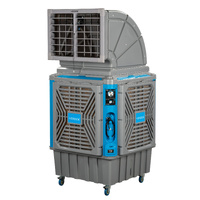




















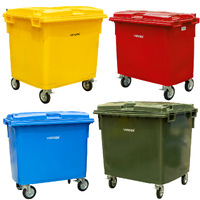








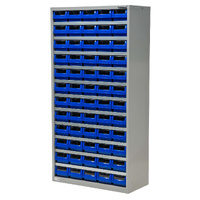




 Trolleys & Hand Trucks
Trolleys & Hand Trucks Cage Trolleys
Cage Trolleys Cleaning Carts & Trolleys
Cleaning Carts & Trolleys Construction Trolleys
Construction Trolleys Custom Trolleys
Custom Trolleys Hand Trucks & Dollies
Hand Trucks & Dollies Laundry/Linen Trolleys
Laundry/Linen Trolleys Lifting Trolleys
Lifting Trolleys Order Picking Trolleys
Order Picking Trolleys Panel Cart Trolleys
Panel Cart Trolleys Platform Trolleys
Platform Trolleys Powered Trolleys
Powered Trolleys Shelf & Tiered Trolleys
Shelf & Tiered Trolleys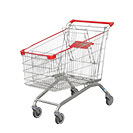 Shopping Trolleys
Shopping Trolleys Stainless Steel Trolleys
Stainless Steel Trolleys Tool Trolleys
Tool Trolleys Utility & Service Carts
Utility & Service Carts Lifting & Handling Equipment
Lifting & Handling Equipment Forklift Attachments
Forklift Attachments Jib Attachments
Jib Attachments Lifting Hoists & Pallet Hooks
Lifting Hoists & Pallet Hooks Load Skates & Tow Tugs
Load Skates & Tow Tugs Manual Stackers & Lifters
Manual Stackers & Lifters Pallet Jacks
Pallet Jacks Pallet Lifters
Pallet Lifters Pallet Rotators & Dispenser
Pallet Rotators & Dispenser Powered Pallet Trucks & Electric Lifters
Powered Pallet Trucks & Electric Lifters Scissor Lift Trolleys and Tables
Scissor Lift Trolleys and Tables Conveyor Equipment
Conveyor Equipment Conveyor Frames & Stands
Conveyor Frames & Stands Roller & Skate Conveyors
Roller & Skate Conveyors Ladders & Access Equipment
Ladders & Access Equipment Container & Yard Ramps
Container & Yard Ramps Ladders & Step Stools
Ladders & Step Stools Work Platforms & Crane Cages
Work Platforms & Crane Cages Drum Handling Equipment
Drum Handling Equipment Drum Storage & Bunding
Drum Storage & Bunding Drum Trolleys & Lifters
Drum Trolleys & Lifters Forklift Drum Handling
Forklift Drum Handling Waste Handling & Bins
Waste Handling & Bins Bin Lifters & Tippers
Bin Lifters & Tippers Plastic Waste & Wheelie Bins
Plastic Waste & Wheelie Bins Steel Waste & Tipping Bins
Steel Waste & Tipping Bins Waste Carts
Waste Carts Dangerous Goods Storage & Spillage
Dangerous Goods Storage & Spillage Aerosol Cans Storage Cages
Aerosol Cans Storage Cages Bunded Pallets & Storage
Bunded Pallets & Storage Corrosive Goods Storage Cabinets
Corrosive Goods Storage Cabinets DG Storage & Trolleys
DG Storage & Trolleys Flammable Liquid Cabinets
Flammable Liquid Cabinets Forklift Gas Storage Cages
Forklift Gas Storage Cages Site Storage
Site Storage Spill Kits
Spill Kits Shelving & Storage Equipment
Shelving & Storage Equipment Stillage & Transport Cages
Stillage & Transport Cages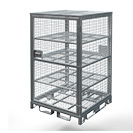 750 Series Cage Configurations
750 Series Cage Configurations Heavy Duty Cabinets
Heavy Duty Cabinets Heavy Duty Shelving
Heavy Duty Shelving Mega Bins & Pallets
Mega Bins & Pallets Packing & Workbenches
Packing & Workbenches Parts Trays & Stor-Pak Bins
Parts Trays & Stor-Pak Bins Pegboard & Louvre Panels
Pegboard & Louvre Panels Plastic Bins & Crates
Plastic Bins & Crates Plastic Handling Solutions Bins
Plastic Handling Solutions Bins Plastic Pallets
Plastic Pallets Stack & Nest Bins
Stack & Nest Bins Pallet Racking Accessories
Pallet Racking Accessories Workplace Equipment
Workplace Equipment Modular Workbenches
Modular Workbenches Electric Height-Adjustable Workbenches
Electric Height-Adjustable Workbenches Floor Matting
Floor Matting General Workplace Equipment
General Workplace Equipment Industrial Weighing Scales
Industrial Weighing Scales Packaging Machinery
Packaging Machinery Stationery Cupboards
Stationery Cupboards Storage and Stillage Cages
Storage and Stillage Cages Tool Trolleys
Tool Trolleys Tooling Cabinets
Tooling Cabinets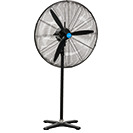 Workshop Fans and Coolers
Workshop Fans and Coolers Safety Barriers, PPE & Signage
Safety Barriers, PPE & Signage Barriers & Bollards
Barriers & Bollards First Aid Equipment
First Aid Equipment Gloves, Knives and PPE
Gloves, Knives and PPE Signage
Signage Cleaning & Site Supplies
Cleaning & Site Supplies Cleaning Equipment
Cleaning Equipment Cleaning Trolleys
Cleaning Trolleys Rubbish Bins
Rubbish Bins Signs & Traffic Supplies
Signs & Traffic Supplies Construction Equipment
Construction Equipment Construction Trolleys
Construction Trolleys Waste Handling
Waste Handling General Site Equipment
General Site Equipment Concrete Equipment
Concrete Equipment Site Storage
Site Storage Lifting Equipment
Lifting Equipment Verdex Specials
Verdex Specials










